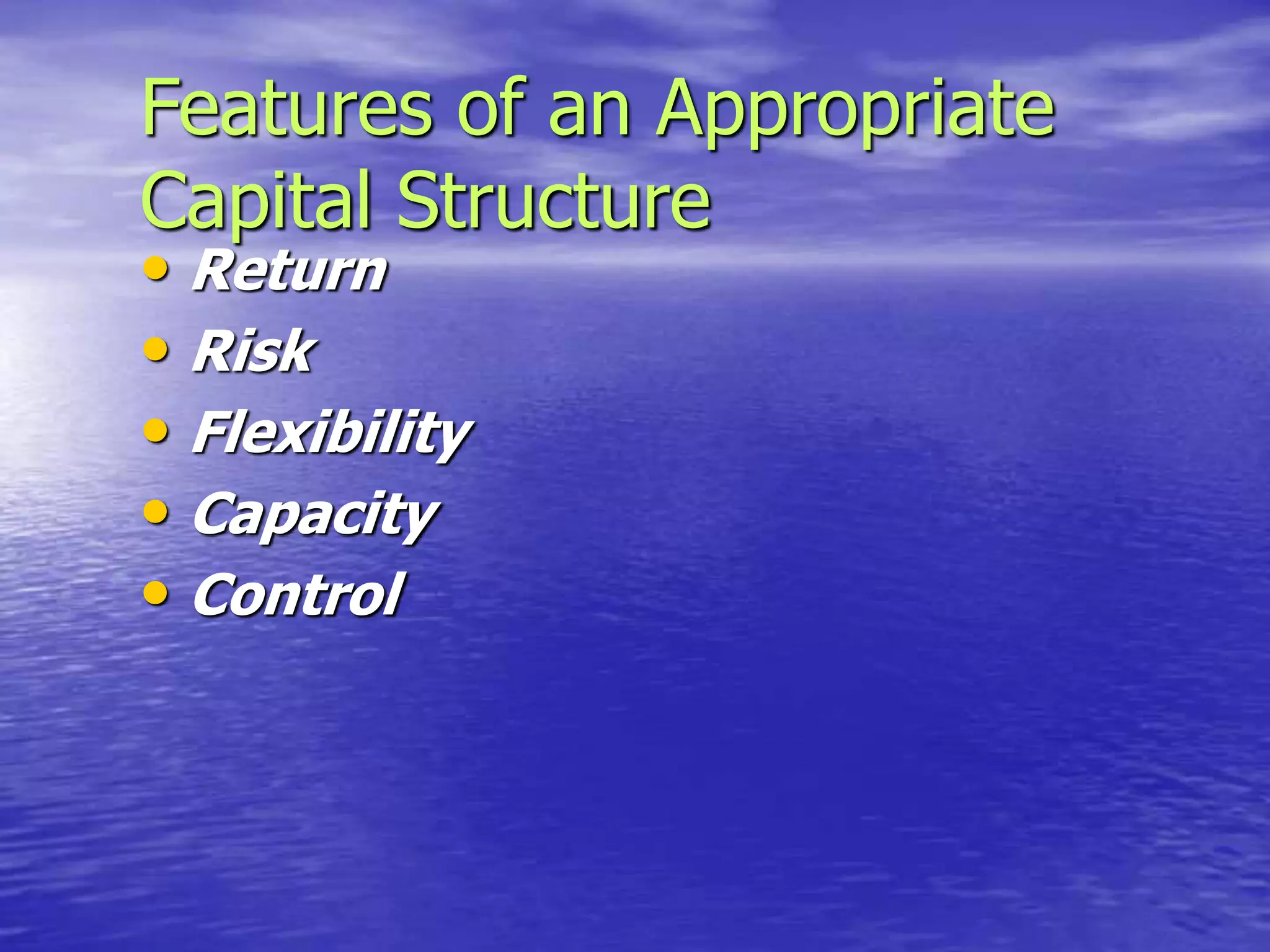The document discusses various factors that influence a company's capital structure and theories around optimal capital structure. It covers factors like financial leverage, growth, costs, and investor requirements. It also discusses reasons for changing capitalization like restoring financial balance or meeting legal needs. Several capital structure theories are examined, including the net income approach, net operating income approach, and MM hypotheses with and without taxes. The document also discusses concepts like indifference points, financial break even points, and how debt-equity mix can impact firm value.


































